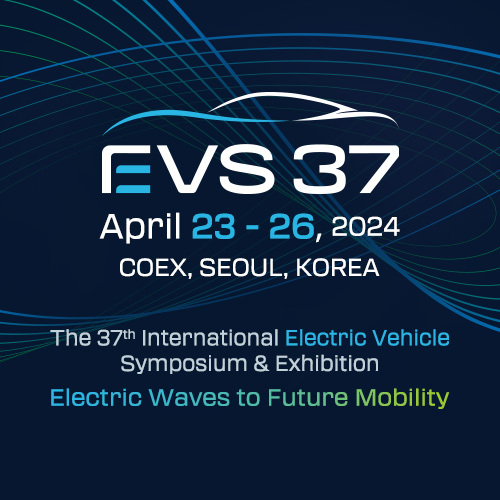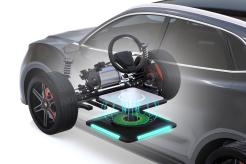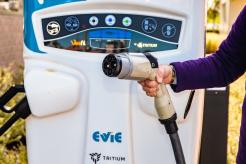One of the objections many people raise when considering an EV purchase is the ease of charging. Flow batteries – refillable EV batteries that use liquid electrolytes – might just change those naysayers into enthusiastic EV adopters if they enter the market.
Let’s look at the potential that liquid EV batteries might hold for the EV charging industry.

Image via Freepik
Ending the Objections Over EVs’ Slow Charging Times
Even the fastest EV chargers – DC fast-charging stations – take a full 15 minutes for a full charge. Add that to the ever-vanishing American supply of patience, and you have a major factor that holds US buyers back from considering an EV purchase.
Flow batteries, nicknamed “Cambridge Crude” for the Massachusetts city where its MIT inventors work, “could make charging an electric car as easy as pulling up to the gas pump,” as an Energy Digital article put it. So, if EV manufacturers start making vehicles that accommodate these rechargeable EV batteries, it should lead to an uptick in the number of people buying EVs.
How Do Flow Batteries Work?
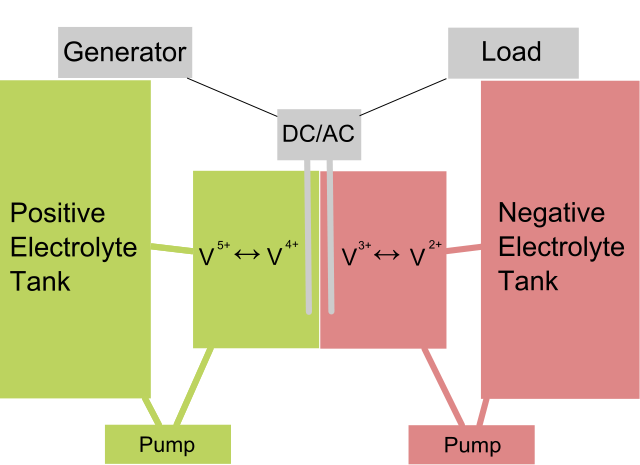
Image via Wikimedia Commons
Flow batteries use a rechargeable liquid that can hold charged particles to generate energy. Users can pump the liquid fuel into a tank that lies between two other tanks – one that stores energy and another that discharges energy. Alternatively, drivers could also recharge the liquid fuel inside the tank or pump it out and replace it with fully charged liquid fuel.
What Advantages Do Liquid EV Batteries Bring to the Table?
According to the MIT research team, this design can lessen both the cost and the size of EV batteries. Since battery weight – and the safety concerns it raises – is another drawback to widespread EV adoption, having a smaller, lighter battery available would make an EV purchase more desirable to more people. In addition, the team pointed out liquid batteries are more efficient than today’s lithium-ion batteries by a factor of 10.
For EV charging infrastructure providers, this design could streamline infrastructure development, making charging stations more affordable to build, install, and maintain. Because fueling stations can use existing pipelines and pumps to move fuel, they wouldn’t need to build additional infrastructure, making it easy for gas stations to convert at least part of their facilities to serve electric vehicles as well.
What’s the Holdup on Flow Batteries?
Other researchers, too, are looking for ways to successfully implement flow batteries into EV design, as NBC News’ Jaclyn Jeffrey-Wilensky reports. Although flow batteries’ development dates from the 1980s, older versions have been too heavy to use in EVs, one of the researchers Jeffrey-Wilensky interviewed revealed.
So far, though, solving this real-life problem is still in the laboratory phase. Only one of the researchers has a working prototype ready to power an actual EV.
Lee Cronin, a Scottish chemist, is running experiments on increasing flow batteries’ energy density by using electrolytes that have a high metal oxide concentration. Purdue’s John Cushman uses high-speed pumps to load his experimental battery with three to five times the energy density of old-school flow batteries.
The MIT researchers, too, haven’t yet succeeded in creating a prototype ready to roll out at scale. Cost and reliability might factor into the equation, Yale professor Hailiang Wang told Jeffrey-Wilensky.
Electric vehicle advocate Scott Greene, who has looked at flow batteries’ potential, fears that drivers might have difficulty recharging or replacing the batteries’ liquid electrolyte at home. Since one of the perks of owning an EV is the convenience of charging them at home, owners might consider going to a fueling station a hassle, Greene points out.
However, with all due respect to Greene, motorists have gone without a home fueling option for years. After all, the corner gas station has been a fixture in American life throughout the 20th century and beyond. If gas stations can easily convert their facilities to accommodate flow battery-powered EVs, the lack of a home fueling option shouldn’t be much of a factor.
When Will Flow Batteries Come to Market?
A European company, nanoFlowcell, has developed a working flow battery prototype that they’ve already tested in a sports car, the Quantino 25. They have opened a United States branch, hoping to bring flow battery cars to market here, says CleanTechnica’s Steve Hanley.
The nanoFlowcell battery filters seawater and wastewater to strict purity standards and then adds various salts to create a powerful electrolyte-laden fuel, bi-ION. Because it uses water in two 33-gallon tanks to power the Quantino 25, its power plant weighs only 528 pounds, contrasted with a lithium-ion battery’s 1,000-2,000 pounds.
With four electric motors, each loaded with 80 horsepower, the Quantino 25 can go from 0 to 100 kilometers per hour (62 mph) in 2.5 seconds. That’s not all. This sleek car has a range of 1,200 miles with both tanks full.
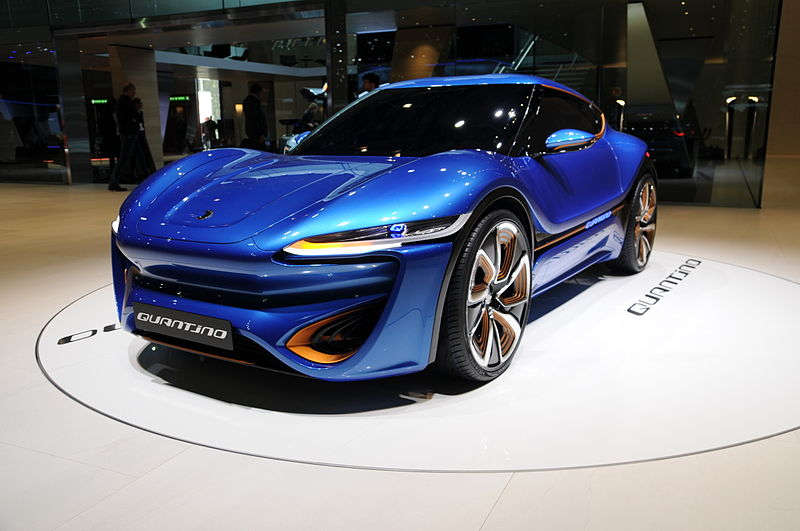
Image by Norbert Aepli via Wikimedia Commons
So far, the Quantino 25 has yet to enter production on a mass scale. However, with one of the earlier test vehicles having passed the 220,000-mile mark with little wear to show for it, it looks like something that would appeal to American motorists. And, if the company makes good on its promise to offer its technology to EV carmakers – with a 50,000-hour guarantee to boot – it will certainly increase US demand since 50,000 hours of driving time equals more than a million miles on the road.
However, as of now, no bi-ION fueling infrastructure exists in the US. This situation presents a unique opportunity for EV charging infrastructure providers to branch out into bi-ION technology.
Since nanoFlowcell’s primary aim is to put its line of flow battery vehicles into production and build a large bi-ION production plant, funneling money into building the infrastructure to support these efforts could pay off in spades for savvy investors. Since the technology uses renewable, non-polluting resources in its production process, it should appeal to eco-conscious investors concerned about the environmental risks inherent in lithium mining.
Discover More Emerging EV Technologies at the Next EV Charging Summit & Expo
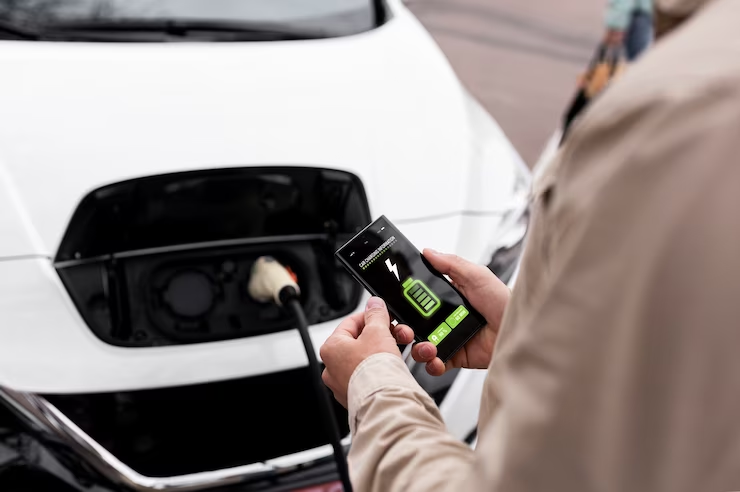
Image via Freepik
The science behind these revolutionary batteries is only one of the exciting developments on the frontier of EV charging technology. Learn more about emerging technologies and other advancements in the EV charging infrastructure industry from the top minds in the field when you attend an EV Charging Summit event.
Whether you’re more interested in financing a new charging station, learning about new technologies, or untangling the bureaucratic paperwork involved in obtaining federal funding, you can learn it at the next Summit.

